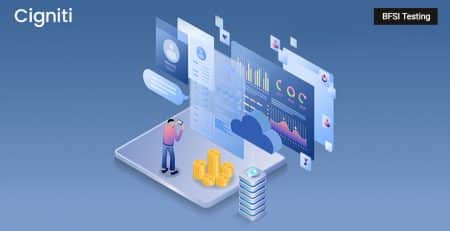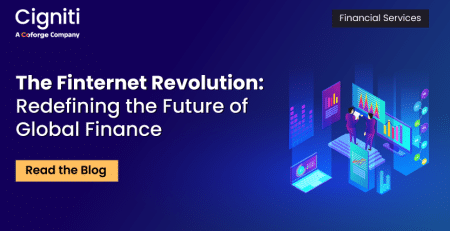Revolutionizing Wealth Management: Legacy Modernization and Streamlining Application Portfolio for Next-Gen Efficiency
In the ever-evolving landscape of wealth management, technology plays a pivotal role in determining the efficiency and effectiveness of operations. Wealth management firms, facing constant pressure to innovate and optimize, must continually evaluate their technological and business process landscapes for cost, time, and functionality efficiencies. This blog delves into providing a structured approach to address these needs and unlock significant value for wealth management firms.
The Need for Transformation
Technology is a significant cost driver in the wealth management sector. With rapid advancements and increasing complexity, firms must continuously evaluate their technology landscape. This is crucial not only for cost management but also for maintaining operational efficiency and competitiveness. Transformation is imperative due to several factors:
- Outdated Systems: Legacy systems often hinder innovation and growth due to their inflexible architecture and obsolete technology. Maintaining these systems can elevate operational costs and reduce financial efficiency.
- Regulatory Compliance: Outdated technology often compromises the agility required to navigate complex and evolving regulatory landscapes.
- Advanced Technologies: Leveraging cutting-edge technologies like artificial intelligence, blockchain, and cloud computing is essential for driving innovation and enhancing operational efficiency. Legacy systems limit this capability.
Transformative Consulting
Transformative Consulting is designed to help wealth management firms analyze their technological landscape and business processes deeply. It provides prescriptive recommendations for realizing efficiencies and creates a framework for continuous analysis. The approach encompasses two key areas: Legacy Modernization and Application Portfolio Optimization.
Legacy Modernization
Legacy modernization addresses the challenges posed by outdated systems. The primary goals include:
- Reducing Operational Costs: Firms can significantly lower maintenance and operational costs by replacing or updating legacy systems.
- Enhancing Agility: Modern systems provide the flexibility to adapt to regulatory changes and new business requirements quickly.
- Leveraging Advanced Technologies: Up-to-date technology enables firms to utilize AI, blockchain, and cloud computing, driving innovation and efficiency.
Application Portfolio Optimization
This involves assessing and managing the collection of software applications within an organization. The focus is optimizing the portfolio for efficiency, cost-effectiveness, and alignment with business objectives. Key considerations include:
- Complex IT Environments: Organizational changes, mergers, and evolving business processes can lead to complex and inflexible IT landscapes. Addressing redundancies and inefficiencies in these environments is crucial.
- Cost Management: By optimizing the application portfolio, firms can significantly reduce IT spending while enhancing service quality and user satisfaction.
Methodology & Deliverables
The Consultative Framework is a comprehensive approach that ensures thorough analysis and practical recommendations. It comprises six stages:
- Planning and Readiness Assessment
- Conduct readiness assessments to understand the current state and define requirements and objectives.
- Develop and distribute questionnaires to gather necessary data.
- Inventory Applications
- Validate responses and select relevant applications and processes.
- Gather and review documentation to create an accurate inventory.
- Business Value and Technical Fit
- Review questionnaire responses to determine application dependencies and identify duplications.
- Cost of Ownership / Application Scores
- Assess the total cost of ownership (TCO) and identify cost outliers.
- Develop a scoring methodology to evaluate applications based on various criteria.
- Application Placement
- Group applications based on their scores and assess future states.
- Analyze hosting alternatives and develop a migration strategy.
- Change Management
- Devise a comprehensive change management strategy.
- Conduct training and proficiency workshops to ensure smooth transitions.
- Review progress and incorporate feedback for continuous improvement.
Key Benefits
This structured approach delivers numerous benefits to wealth management firms:
- Cost Reduction
- Licensing Costs: Significant savings on licensing costs by optimizing the software portfolio.
- Maintenance Costs: Maintenance costs are reduced due to the elimination of outdated and redundant systems.
- Infrastructure Expenses: Lower infrastructure costs through the consolidation of systems and efficient use of resources.
- IT Team Size: A streamlined IT team saves further costs.
- Improved Efficiency
- Business Process Complexity: Simplification of business processes reduces complexity and enhances operational efficiency.
- Redundancy and Duplication: Avoiding redundancy and duplication leads to more streamlined operations.
- Straight Through Processing (STP): Increased STP improves transaction processing speed and accuracy.
- Enhanced Agility
- Adaptability: Quickly adapting to changing business needs and regulatory requirements.
- Latest Technology: Deployment of the latest technology facilitates better innovation opportunities.
- Risk Mitigation
- Robust Technology Landscape: A modern and robust technology landscape reduces operational risks.
- Clearer Data Paths: Improved data paths enhance da/ta management and security.
- Resiliency: Increased resiliency against disruptions and security threats.
- Compliance: Enhanced compliance with regulatory requirements reduces the risk of legal issues.
- Strategic Alignment
- Business Strategy: Aligning IT resources with the overall business strategy ensures that technological investments support business goals.
- Resource Allocation: Prioritized resource allocation maximizes the value derived from IT investments.
- Long-term Value: Unlocking value in the long term through strategic investments in technology and process optimization.
Conclusion
In the dynamic wealth management landscape, continuous evaluation and optimization of the technological landscape are critical. Cigniti’s Transformative Consulting solution provides a structured, comprehensive approach to help firms achieve significant efficiencies and maintain competitiveness. By addressing legacy modernization and application portfolio optimization, wealth management firms can reduce costs, improve efficiency, enhance agility, mitigate risks, and align technology with strategic business goals. This transformation is essential for staying ahead in a highly competitive industry and unlocking long-term value.
Need help? Contact our BFSI experts to learn more about revolutionizing wealth management through legacy modernization and streamlining your application portfolio for next-gen efficiency.





Leave a Reply